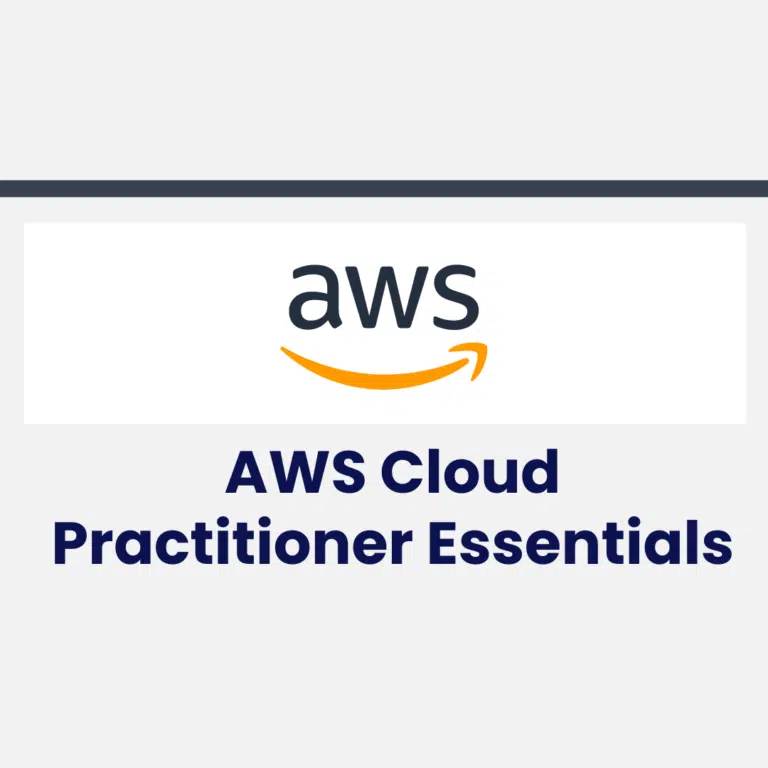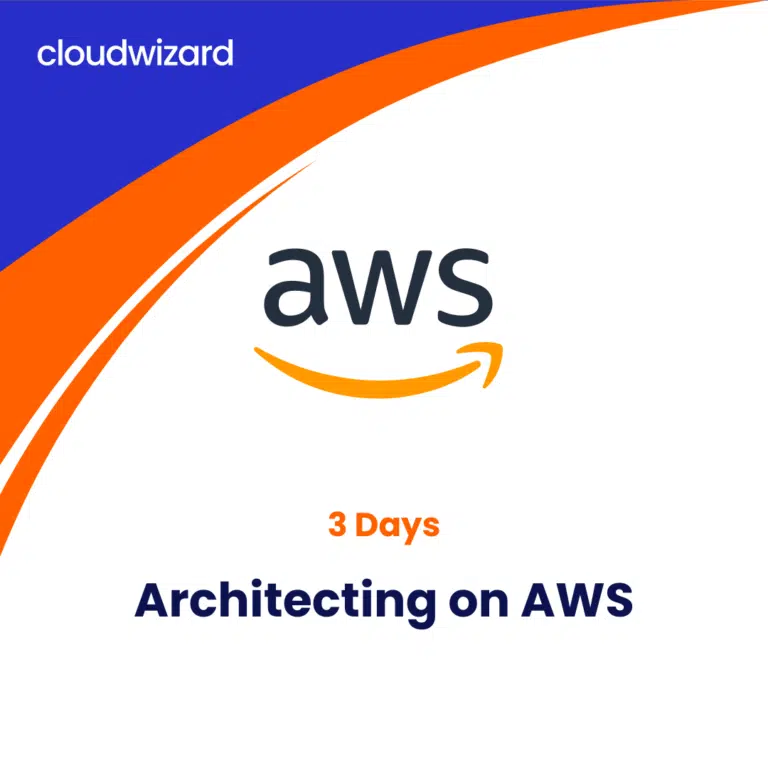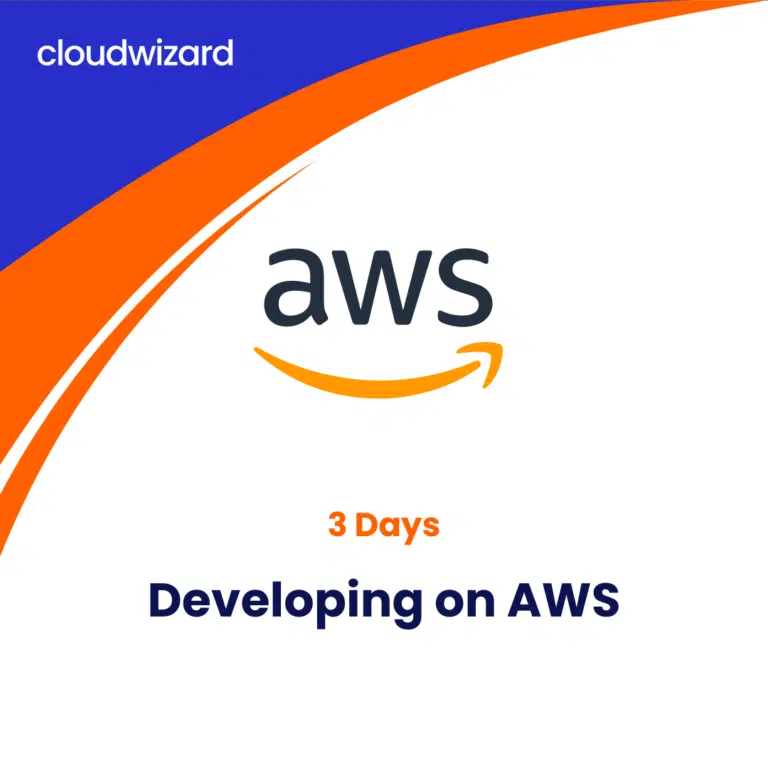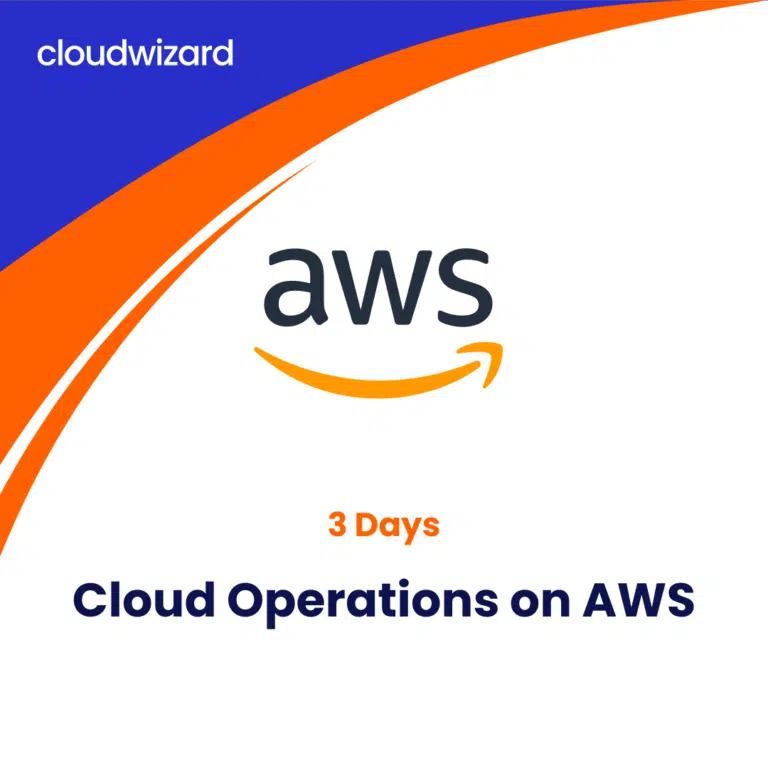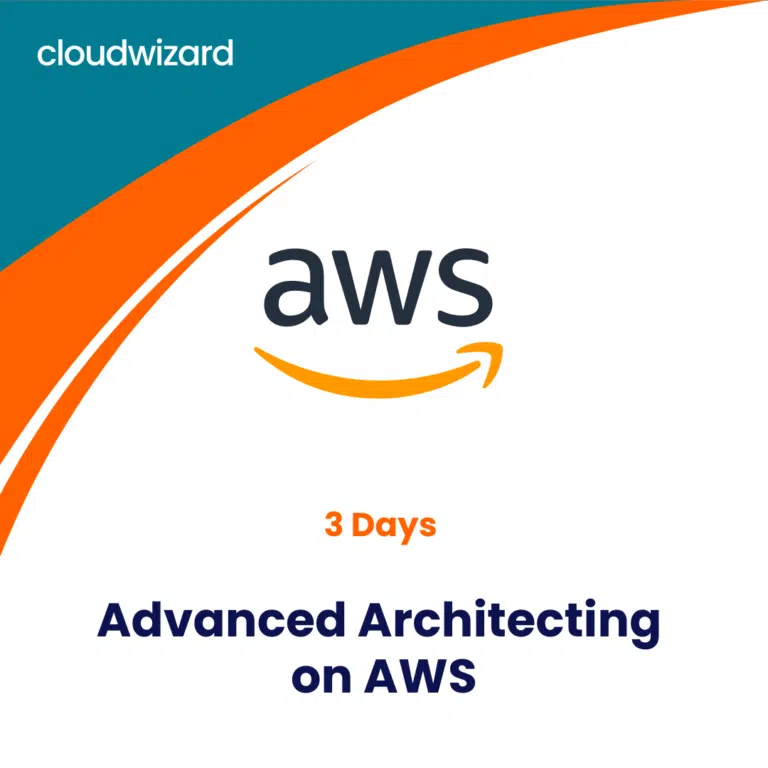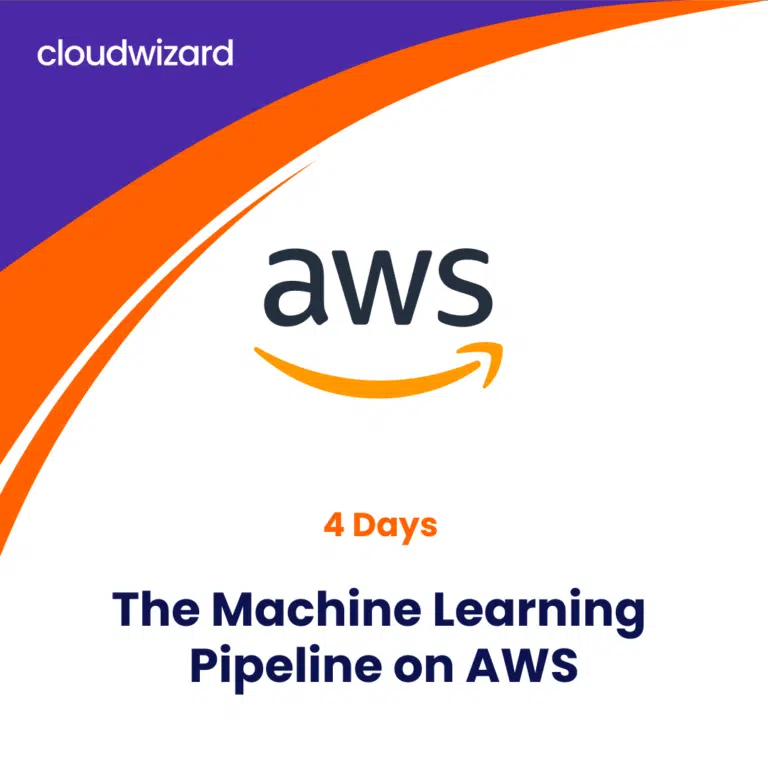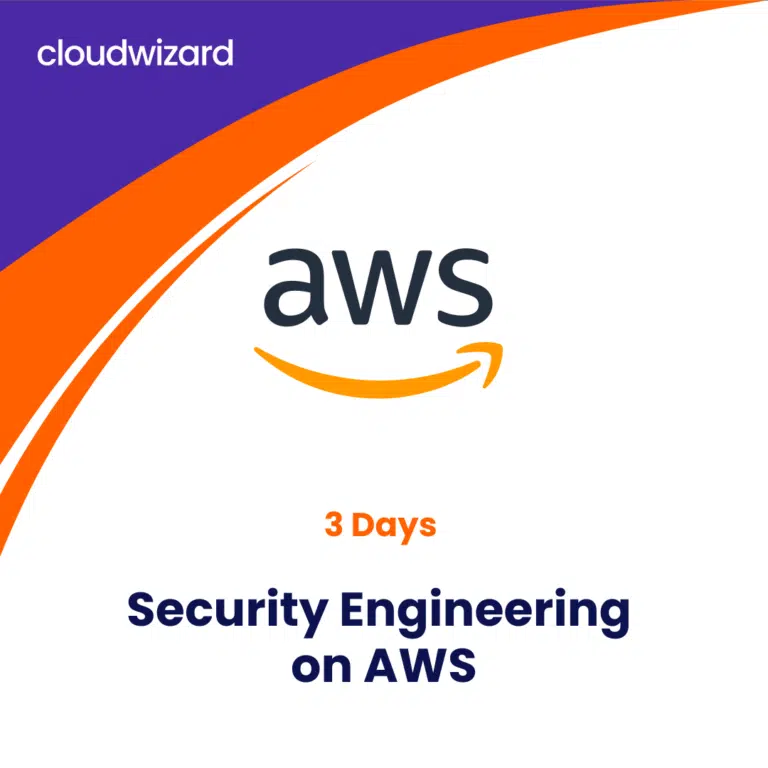Advanced Developing on AWS
This course is focused around analyzing a monolithic application and determining logical break points where the application can be broken down across various AWS services. You will learn advanced development techniques to deconstruct on-premise legacy applications and repackage them into cloud-based architectures.
You will also learn to apply twelve-factor application manifesto concepts and steps while migrating from a monolithic architecture, along with using the AWS API, CLI and SDKs to monitor and manage AWS services
The course is recommended for experienced software developers who are already familiar with various AWS services. You will need at least one high-level programming language and working knowledge of core AWS services and public cloud implementations. We also recommend that the learners should have completed the Developing on AWS classroom course and have a minimum of six months experience in applying these concepts in real life
3 Day / 24 Hours
Live Class
Certificate on completion
You will learn about the following
- Determine logical or programmatic break points in a monolithic application design so that the application may be divided among several AWS services.
- Apply the ideas and techniques from the Twelve-Factor Application manifesto as you transition from monolithic design.
- Provide advice on the best AWS services to use while creating a microservices-based, cloud-native application.
- To administer and keep track of AWS services, use the AWS API, CLI, and SDKs.
- Use the 6 Rs of migration to convert a monolithic application to a microservices application.
- Describe the interdependencies between SysOps and DevOps required to deploy a microservices application in AWS.
What experience you need
- Comprehensive understanding of at least one high-level programming language
- Working familiarity with implementing public clouds and the critical AWS services
- Completed Developing on AWS classroom training and used those ideas for at least six months in a real-world setting.
Who should take this course
- Experienced software developer that are accustomed to using AWS services
Module 1: The Cloud Journey
- Common off-cloud architecture
- Introduction to Cloud Air
- Monolithic architecture
- Migration to the cloud
- Guardrails
- The six R’s of migration
- The Twelve-Factor Application Methodology
- Architectural styles and patterns
- Overview of AWS Services
- Interfacing with AWS Services
- Authentication
- Infrastructure as code and Elastic Beanstalk
- Demonstration: Walk through creating base infrastructure with AWS CloudFormation in the AWS console
- Hands-on lab 1: Deploy your monolith application using AWS Elastic Beanstalk
Module 2: Gaining Agility
- DevOps
- CI/CD
- Application configuration
- Secrets management
- CI/CD Services in AWS
- Demonstration: Demo AWS Secrets Manager
Module 5: Monolith to Microservices
- Microservices
- Serverless
- A look at Cloud Air
- Microservices using Lambda and API Gateway
- SAM
- Strangling the Monolith
- Hands-on lab: Using AWS Lambda to develop microservices.
Module 6: Polyglot Persistence & Distributed Complexity
- Polyglot persistence
- DynamoDB best practices
- Distributed complexity
- Step functions
Module 5: Resilience and Scale
- Decentralized data stores
- Amazon SQS
- Amazon SNS
- Amazon Kinesis Streams
- AWS IoT Message Broker
- Serverless event bus
- Event sourcing and CQRS
- Designing for resilience in the cloud
- Hands-on lab: Exploring the AWS messaging options.
Module 6: Security and Observability
- Serverless Compute with AWS Lambda
- Authentication with Amazon Cognito
- Debugging and traceability
- Hands-on lab: Developing microservices on AWS.
- Hands-on lab 8: Automating deployments with Cloud Formation
Talk to a Learning Advisor
Popular AWS Courses
FAQs
To enroll in this course, choose the starting date and make an online payment. Once your payment is confirmed, our team will reach out to you.
You may reach out at the contact number listed on our official website or write us at info@cloudwizardconsulting.com
Wire Transfer, Credit Card, Debit Card, UPI & Purchase Order.
There is no minimum number of candidates required, we are happy to train 1 to 1 . With regards to the maximum number, we can accomodate 30 learners in one batch.
- Training Delivered by an Amazon Authorized Instructor.
- AWS Content E-Kit
- Hands-on-labs for 30 days
- Class attendance certificate
You will get the access to course content & lab on first day of your training session.
The course Completion Certificate will be issued to your email id within 2 weeks of completing your course.
A one-day course could be delivered over two half day sessions (4 hours a day), or a three-day course could be delivered over five days (4 hours a day)
MOBILE LAYOUT
Advanced Developing on AWS
3 Day / 24 Hours
Live Class
Certificate on completion
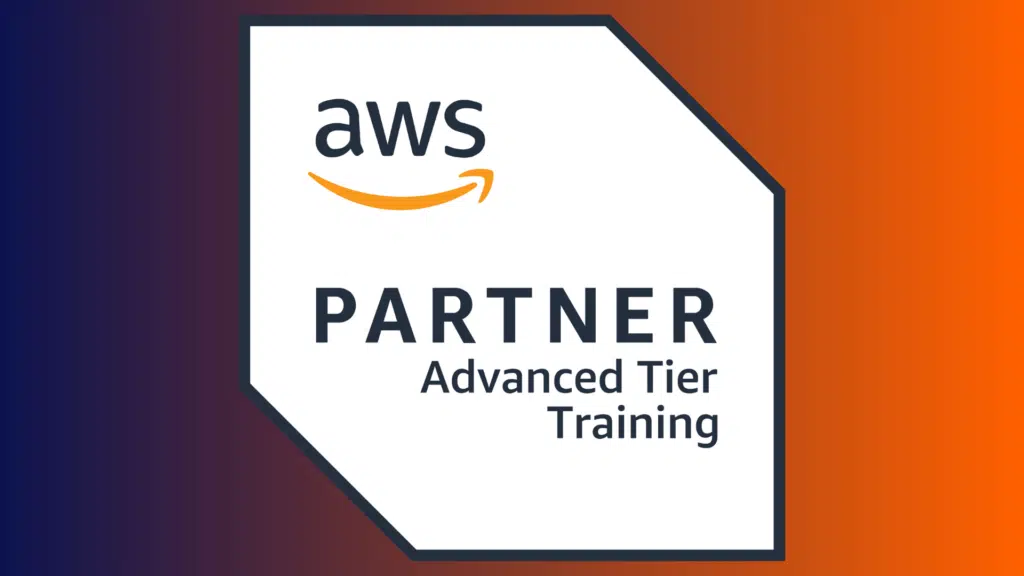
Objectives
Here’s what you’ll learn in this course:
- Determine logical or programmatic break points in a monolithic application design so that the application may be divided among several AWS services.
- Apply the ideas and techniques from the Twelve-Factor Application manifesto as you transition from monolithic design.
- Provide advice on the best AWS services to use while creating a microservices-based, cloud-native application.
- To administer and keep track of AWS services, use the AWS API, CLI, and SDKs.
- Use the 6 Rs of migration to convert a monolithic application to a microservices application.
- Describe the interdependencies between SysOps and DevOps required to deploy a microservices application in AWS.
Prerequisites
To qualify for taking up this course, you’ll need the following:
- Comprehensive understanding of at least one high-level programming language
- Working familiarity with implementing public clouds and the critical AWS services
- Completed Developing on AWS classroom training and used those ideas for at least six months in a real-world setting.
Intendend Audience
You can take on this course if you are an
- Experienced software developer that are accustomed to using AWS services
Module Breakdown
Module 1: The Cloud Journey
- Common off-cloud architecture
- Introduction to Cloud Air
- Monolithic architecture
- Migration to the cloud
- Guardrails
- The six R’s of migration
- The Twelve-Factor Application Methodology
- Architectural styles and patterns
- Overview of AWS Services
- Interfacing with AWS Services
- Authentication
- Infrastructure as code and Elastic Beanstalk
- Demonstration: Walk through creating base infrastructure with AWS CloudFormation in the AWS console
- Hands-on lab 1: Deploy your monolith application using AWS Elastic Beanstalk
Module 2: Gaining Agility
- DevOps
- CI/CD
- Application configuration
- Secrets management
- CI/CD Services in AWS
- Demonstration: Demo AWS Secrets Manager
Module 5: Monolith to Microservices
- Microservices
- Serverless
- A look at Cloud Air
- Microservices using Lambda and API Gateway
- SAM
- Strangling the Monolith
- Hands-on lab: Using AWS Lambda to develop microservices.
Module 6: Polyglot Persistence & Distributed Complexity
- Polyglot persistence
- DynamoDB best practices
- Distributed complexity
- Step functions
Module 5: Resilience and Scale
- Decentralized data stores
- Amazon SQS
- Amazon SNS
- Amazon Kinesis Streams
- AWS IoT Message Broker
- Serverless event bus
- Event sourcing and CQRS
- Designing for resilience in the cloud
- Hands-on lab: Exploring the AWS messaging options.
Module 6: Security and Observability
- Serverless Compute with AWS Lambda
- Authentication with Amazon Cognito
- Debugging and traceability
- Hands-on lab: Developing microservices on AWS.
- Hands-on lab 8: Automating deployments with Cloud Formation
Talk to a Learning Advisor
Tablet View
Popular AWS Courses
FAQs
To enroll in this course, choose the starting date and make an online payment. Once your payment is confirmed, our team will reach out to you.
You may reach out at the contact number listed on our official website or write us at info@cloudwizardconsulting.com
Wire Transfer, Credit Card, Debit Card, UPI & Purchase Order.
There is no minimum number of candidates required, we are happy to train 1 to 1 . With regards to the maximum number, we can accomodate 30 learners in one batch.
- Training Delivered by an Amazon Authorized Instructor.
- AWS Content E-Kit
- Hands-on-labs for 30 days
- Class attendance certificate
You will get the access to course content & lab on first day of your training session.
The course Completion Certificate will be issued to your email id within 2 weeks of completing your course.
A one-day course could be delivered over two half day sessions (4 hours a day), or a three-day course could be delivered over five days (4 hours a day)
Advanced Developing on AWS
This course is focused around analyzing a monolithic application and determining logical break points where the application can be broken down across various AWS services. You will learn advanced development techniques to deconstruct on-premise legacy applications and repackage them into cloud-based architectures.
You will also learn to apply twelve-factor application manifesto concepts and steps while migrating from a monolithic architecture, along with using the AWS API, CLI and SDKs to monitor and manage AWS services
The course is recommended for experienced software developers who are already familiar with various AWS services. You will need at least one high-level programming language and working knowledge of core AWS services and public cloud implementations. We also recommend that the learners should have completed the Developing on AWS classroom course and have a minimum of six months experience in applying these concepts in real life
3 Day / 24 Hours
Live Class
Certificate on completion
Objectives
Here’s what you’ll learn in this course:
- Determine logical or programmatic break points in a monolithic application design so that the application may be divided among several AWS services.
- Apply the ideas and techniques from the Twelve-Factor Application manifesto as you transition from monolithic design.
- Provide advice on the best AWS services to use while creating a microservices-based, cloud-native application.
- To administer and keep track of AWS services, use the AWS API, CLI, and SDKs.
- Use the 6 Rs of migration to convert a monolithic application to a microservices application.
- Describe the interdependencies between SysOps and DevOps required to deploy a microservices application in AWS.
Prerequisites
To qualify for taking up this course, you’ll need the following:
- Comprehensive understanding of at least one high-level programming language
- Working familiarity with implementing public clouds and the critical AWS services
- Completed Developing on AWS classroom training and used those ideas for at least six months in a real-world setting.
Intended Audience
You can take on this course if you are an
- Experienced software developer that are accustomed to using AWS services
Module 1: The Cloud Journey
- Common off-cloud architecture
- Introduction to Cloud Air
- Monolithic architecture
- Migration to the cloud
- Guardrails
- The six R’s of migration
- The Twelve-Factor Application Methodology
- Architectural styles and patterns
- Overview of AWS Services
- Interfacing with AWS Services
- Authentication
- Infrastructure as code and Elastic Beanstalk
- Demonstration: Walk through creating base infrastructure with AWS CloudFormation in the AWS console
- Hands-on lab 1: Deploy your monolith application using AWS Elastic Beanstalk
Module 2: Gaining Agility
- DevOps
- CI/CD
- Application configuration
- Secrets management
- CI/CD Services in AWS
- Demonstration: Demo AWS Secrets Manager
Module 5: Monolith to Microservices
- Microservices
- Serverless
- A look at Cloud Air
- Microservices using Lambda and API Gateway
- SAM
- Strangling the Monolith
- Hands-on lab: Using AWS Lambda to develop microservices.
Module 6: Polyglot Persistence & Distributed Complexity
- Polyglot persistence
- DynamoDB best practices
- Distributed complexity
- Step functions
Module 5: Resilience and Scale
- Decentralized data stores
- Amazon SQS
- Amazon SNS
- Amazon Kinesis Streams
- AWS IoT Message Broker
- Serverless event bus
- Event sourcing and CQRS
- Designing for resilience in the cloud
- Hands-on lab: Exploring the AWS messaging options.
Module 6: Security and Observability
- Serverless Compute with AWS Lambda
- Authentication with Amazon Cognito
- Debugging and traceability
- Hands-on lab: Developing microservices on AWS.
- Hands-on lab 8: Automating deployments with Cloud Formation
Talk to a Learning Advisor
FAQs
Yes, we are an AWS Advanced Tier Training Partner
Anyone who wants to start a profession in AWS cloud is fit to enroll in this course. No prior knowledge of coding or other technical skills is required.
To enroll in this course, choose the starting date and make an online payment. Once your payment is confirmed, our team will reach out to you.
You may reach out at the contact number listed on our official website or write to us at info@cloudwizard.wpenginepowered.com.
Wire Transfer, Credit Card, Debit Card, UPI & Purchase Order
There is no minimum number of candidates required, we are happy to train 1 to 1 should you wish. With regard to the maximum number, we can accommodate 30 learners in one batch.
1. Training delivered by an Amazon Authorised Instructor
2. AWS Content E-Kit
3. Hands-on labs- 30 days
4. Class attendance certificate
You will get the access to course content & lab on first day of your training session.
The course completion certificate will be issued to your email id within 2 weeks of completing your course.
A one-day course could be delivered over two half day sessions (4 hours a day), or a three-day course could be delivered over five days (4 hours a day).


